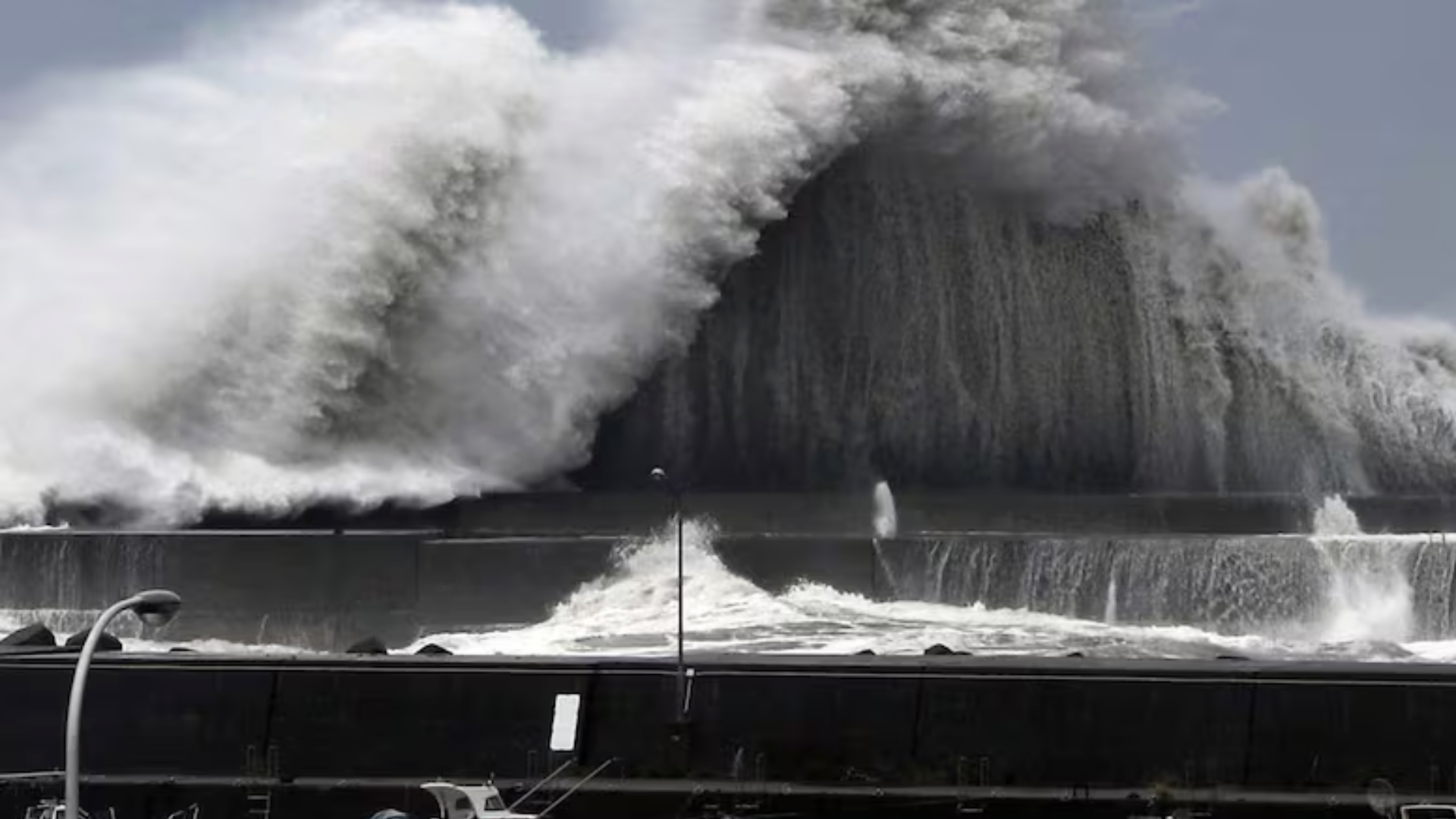Residents in parts of Japan are being ordered to evacuate, and some homes have lost power as Typhoon Ampil approaches the coast near Tokyo.
According to the Joint Typhoon Warning Center (JTWC), the storm, located 121 nautical miles southeast of Yokosuka, Greater Tokyo, has intensified to the equivalent strength of a Category 4 hurricane, with winds reaching up to 212 kilometers per hour (131 mph) as it moves north at 18 kph (11 mph).
Typhoon Ampil has rapidly gained strength over the past two days, partly due to moving over very warm water, which has increased the moisture in the air and fueled the typhoon.
The storm is expected to continue intensifying in the next 12 hours, potentially reaching its peak as it passes near Japan.
In preparation for the typhoon’s arrival, authorities in the coastal city of Isumi have issued evacuation notices to nearly 17,000 households, particularly urging vulnerable residents such as the elderly and those with disabilities to seek safety.
The storm is forecasted to hit the area by late Friday, bringing strong winds and heavy rain. A similar notice was also issued in the city of Yokohama, south of Tokyo, with authorities warning that all residents should be prepared to evacuate.
By Friday morning, as rain and wind intensified in coastal areas, more than a thousand households had lost power, according to electricity company TEPCO. In response to the storm, railways and airlines are cancelling services during the peak summer travel season.
MUST READ: Japan Prime Minister Kishida Set To Resign After LDP Race Withdrawal
Two major airlines, Japan Airlines and All Nippon Airways, have cancelled about 500 flights serving the capital’s Haneda and Narita airports, NHK reported. Japan‘s rail network is also facing disruptions due to Typhoon Ampil, with six bullet train lines suspending services or warning of significant delays, including the Tokaido line, a major route connecting Tokyo and Osaka.
Meteorology officials are warning of severe weather conditions in northern and eastern Japan, including strong winds, rough seas, heavy rain, and potential flooding and landslides. Authorities are urging the public to take necessary precautions and stay prepared for the storm’s impact.
According to Japan’s Meteorological Agency, the storm’s center is expected to remain slightly offshore as it turns toward the northeast and moves away from Japan. If it stays offshore and only brushes the coast, it might have a lighter impact on Japan, bringing rain and wind to some areas including Tokyo. However, it could have a much stronger effect if the direction changes to bring the center closer to the coast or even makes landfall.
The storm is expected to weaken by Saturday morning local time and die down as it moves into cooler waters over the weekend.
(WITH INPUTS FROM ANI)
ALSO READ: Columbia University President Resigns Amid Gaza Protests Controversy
















